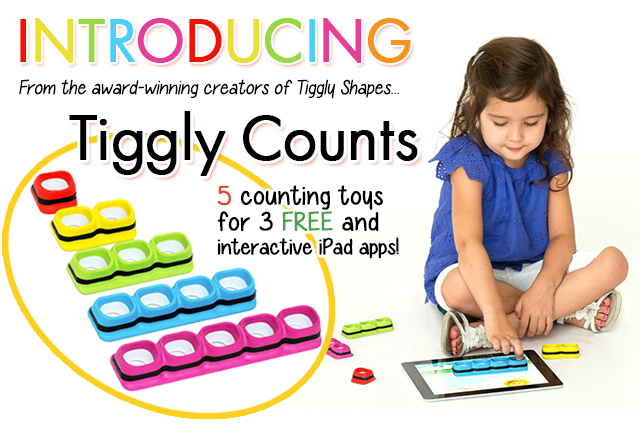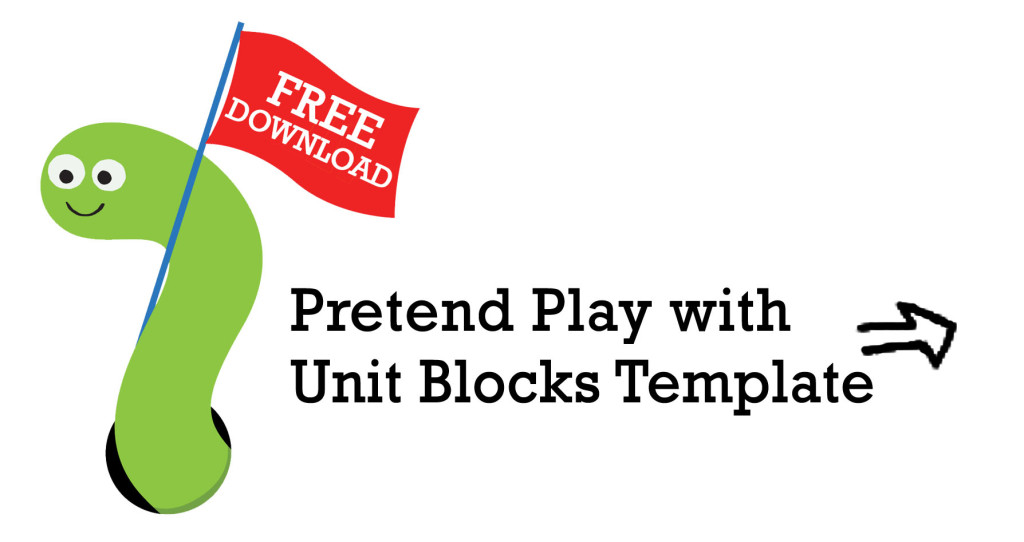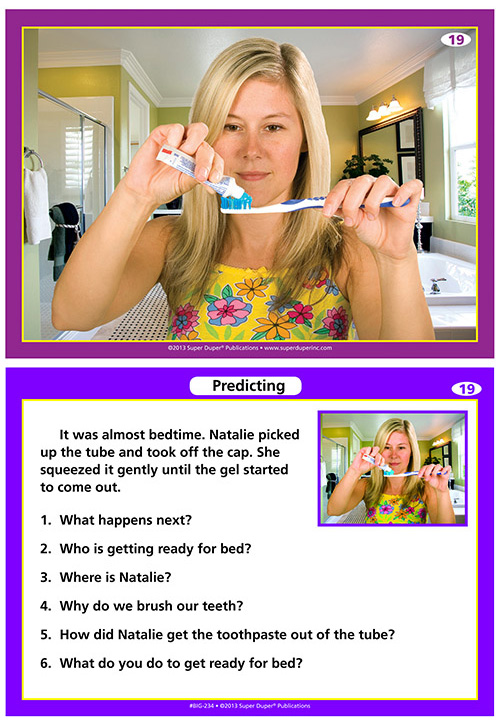A playful world of math learning awaits in the all-new Tiggly Counts! From the award-winning makers of Tiggly Shapes, Tiggly Counts is a set of 5 counting toys that interact with 3 free iPad apps to connect children to a playful world of math learning. The apps and manipulatives work in tandem to develop a child’s number sense, counting skills, understanding of math operations, and more. The 3 free apps include Tiggly Chef, Tiggly Cardtoons, and Tiggly Addventure, and introduce children to a wonderful world of lovable characters that surprise and delight, as they learn essential early math abilities. Designed for children ages 3 and up.
Tag Archives: special education
“When This Mom Couldn’t Find What She Needed To Help Her Autistic Daughter, She Created A Site That Could”
We’re incredibly THRILLED to share this inspiring feature on our President and Founder Julie Azuma just published today on Huffington Post. Julie was recently featured in Marlo Thomas’ new book It Ain’t Over… Till It’s Over, which reveals the stories of 60 different women who prove that it’s never too late to live out a dream. Brimming with anecdotes that will inspire smiles, tears, and—most of all—hope, Marlo Thomas’ book will speak to women of all ages.
We’re so proud of Julie and appreciate the invaluable help she’s given to so many. Congratulations, Julie!
Registration Open for Bridge Kids of NY’s Specialized Social Groups – Winter Session
If you’re in NYC, you must check out these Specialized Social Groups offered by the wonderful folks at Bridge Kids of NY. With a team of professionals who strive to improve the quality of everyday living for children and families, BKNY presents several fun and interactive social groups to support children in their social, communication, and behavioral growth. Below are two groups in which you can now enroll your child for the upcoming winter session:

This fun and interactive group meets on Tuesdays or Thursdays, and is a 50-minute social skills group for children ages 2–5 years who experience difficulty in socializing with peers. Through play and group activities a qualified therapeutic team will focus on key social behaviors such as:
- Eye-Contact
- Taking Turns/Sharing
- Understanding Personal Boundaries
- Utilizing Appropriate Social Language
- Initiating and Maintaining Social Interactions
 Bridge Kids Happy Eaters Group
Bridge Kids Happy Eaters Group
This group meets on Tuesdays or Thursdays, and is designed for our little ones who are “picky eaters”. If your child often refuses new foods, presents with a limited range of accepted foods, and/or engages in problematic behavior surrounding mealtimes, these skilled therapists can help! This group focuses on:
- Creating Positive Mealtime
- Experiences
- Introducing New and Nutritious Foods
- Healthy Exploration of Food
- Simple Food Preparation
- Supporting a Healthy Mind and Tummy
Register your child now in these specialized social groups for the upcoming winter session. Both groups meet for 10 sessions each at 4:00 PM on Tuesdays or Thursdays.
Pick of the Week: Token Towers – Reinforcing just got more fun!
We can never get enough reinforcement tools, especially for group settings. Help students meet behavioral or academic goals with these interactive Token Towers. And this week only, you can save 15%* on your set of the Token Towers, by using promo code TOKENTWR at check out.
Set goals using the colored ring and insert tokens as reinforcement for appropriate behaviors or correct responses. The hard plastic chips with smiley faces make a fun noise as they drop into the containers, which is almost as fun as watching the tokens pile up!
This kit includes four Token Towers (red, yellow, green, and blue) and 140 tokens (35 for each tower). Each Token Tower has target goal levels of 5, 10, 15, 20, 25, 30 and can hold a maximum of 35 tokens. The towers measure 6 ½” tall with tokens measuring 1 ½” in diameter. Recommended for children ages 3 and up.
Don’t forget! We’re featuring this newly added set of Token Towers as our Pick of the Week, so be sure to use promo code TOKENTWR to take 15% off* your order.
*Offer is valid until 11:59pm EST on October 28th, 2014. Not compatible with any other offers. Be sure there are no spaces or dashes in your code at check out!
Increasing Play with Unit Blocks – Free Download
 Symbolic play refers to a child’s ability to use one object or action to represent a different object or action within imaginary play. The symbolic play skill that involves object substitution typically begins to emerge around 18 months. For example, you might observe a child using an empty box for a “hat” or an overturned bucket for a “drum.” Blocks are a mainstay in early childhood classrooms because the benefits are innumerable. Block play can help to facilitate cooperation, visuo-spatial skills, problem solving ability, social skills, and language development, and is a good predictor of future mathematical abilities.
Symbolic play refers to a child’s ability to use one object or action to represent a different object or action within imaginary play. The symbolic play skill that involves object substitution typically begins to emerge around 18 months. For example, you might observe a child using an empty box for a “hat” or an overturned bucket for a “drum.” Blocks are a mainstay in early childhood classrooms because the benefits are innumerable. Block play can help to facilitate cooperation, visuo-spatial skills, problem solving ability, social skills, and language development, and is a good predictor of future mathematical abilities.
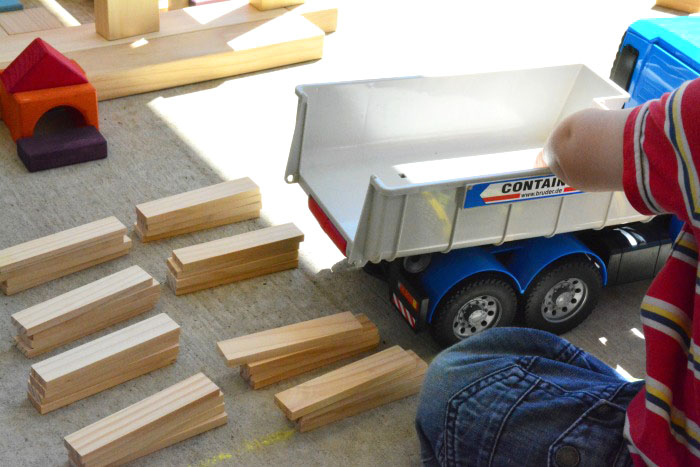 One hallmark of the diagnostic criteria for autism spectrum disorder is a presence of “persistent deficits in social communication and social interaction across multiple contexts, as manifested by difficulties in sharing imaginative play or in making friends.” Additionally, rigid thinking patterns may make symbolic play difficult for children with autism as they might view objects in a limited way that makes it difficult to pretend a block is something other than a block.
One hallmark of the diagnostic criteria for autism spectrum disorder is a presence of “persistent deficits in social communication and social interaction across multiple contexts, as manifested by difficulties in sharing imaginative play or in making friends.” Additionally, rigid thinking patterns may make symbolic play difficult for children with autism as they might view objects in a limited way that makes it difficult to pretend a block is something other than a block. 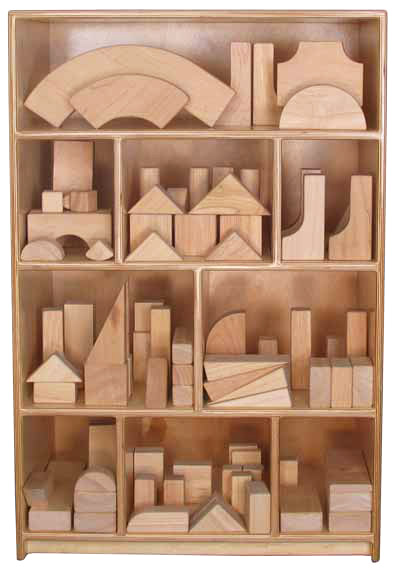 Since unit blocks are a huge component of early childhood classrooms everywhere one could imagine that exposure to them and some level of proficiency opens up huge social opportunities for learners with autism spectrum disorders with their mainstream peers in the classroom.
Since unit blocks are a huge component of early childhood classrooms everywhere one could imagine that exposure to them and some level of proficiency opens up huge social opportunities for learners with autism spectrum disorders with their mainstream peers in the classroom.
Some learners will require scaffolding in order to progress from the use of literal props within pretend play to object substitutions. Research suggests that systematic prompting is a common component of successful interventions used for teaching play. Depending on the learner, various types of prompts will be used as you systematically move from most intrusive to least intrusive prompt levels. Sometimes, a learner begins to respond to natural cues before you have moved through each prompt level. However, for learners that require support froma visual prompt you can attach 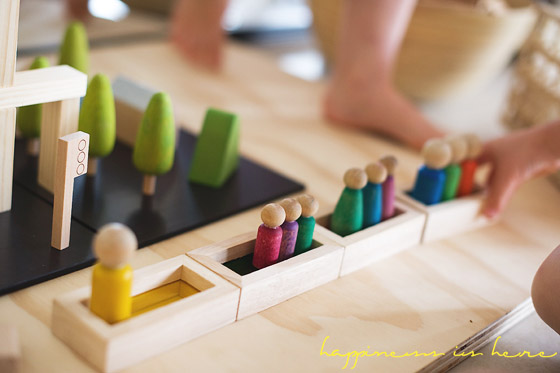 drawings of objects onto the blocks and then systematically fade them out. Once the learner begins to consistently use the blocks with the attached images you can use stimulus fading procedure to fade out the visual prompt. This can be done by photocopying the image and systematically changing the lightness until eventually the learner is presented with just the block.
drawings of objects onto the blocks and then systematically fade them out. Once the learner begins to consistently use the blocks with the attached images you can use stimulus fading procedure to fade out the visual prompt. This can be done by photocopying the image and systematically changing the lightness until eventually the learner is presented with just the block.

Below you will find downloadable images in the shape of unit blocks to help you facilitate symbolic play with a learner who requires visual prompts. The images are to scale and just the tip of the iceberg when it comes to all of the possibilities. It is important to teach various object substitutions for each block shape so that the skill is generalized. In a classroom where the curriculum is organized thematically, you could attach a few visuals to various blocks each time the theme changes to encourage symbolic play for the whole class.
References
Cook, D. (1996). Mathematics sense making and role play in the nursery school. Early Childhood Development and Care, 121, 55-65.
Wolfgang, C., Stannard, L. & Jones, I. (2001). Block play performance among preschoolers as a predictor of later school achievement in mathematics. Journal of Research in Childhood Education, 15(20): 173-180.
Smilansky, S., & Shefatya, L. (1990). Facilitating play: A medium for promoting cognitive, socioemotional and academic development in young children. Gaithersburg, MD: Psychosocial & Educational Publications.
Christakis, D.A., Zimmerman F.J., & Garrison M.M. (2007). Effect of block play on language acquisition and attention in toddlers: a pilot randomized controlled trial. Arch Pediatr Adolesc Med. 161(10):967-71.
Pepler, D.J., & Ross, H.S. (1981(. The effects of play on convergent and divergent problem solving. Child Development, 52(4): 1202-1210.
Lang, R., O’Reilly, M., Rispoli, M., Shogren, K., et al. (2009). Review of interventions to increase functional and symbolic play in children with autism. Education and Training in Developmental Disabilities, 44(4), 481– 492.
Cooper, J. O., Heron, T. E., & Heward, W. L. (2007). Applied behavior analysis, 2nd ed. Upper Saddle River, N.J.: Pearson Prentice Hall.
Written by Stacy Asay, LMSW
Stacy is a licensed social worker, providing home and school based services to children and their families in the New York City area. With nearly 16 years of experience, her work with special needs children integrates a strengths-based, holistic approach to child and family augmented with the tools of Applied Behavior Analysis, a methodology that allows for reliable measurement, objective evaluation of behaviors, and the systematic teaching of language and learning skills. This results in an individualized curriculum that equips children with the tools they need for learning and living while honoring their unique spirit.
Pick of the Week: Inference Card Decks – Learn to infer meanings through critical thinking and auditory comprehension
Oftentimes, people do not communicate a complete message; they assume their listeners are also interpreting important visual information. Help students learn how to determine the “true” meanings of messages and improve their critical thinking, auditory comprehension, and inferencing skills with our newly added inferencing card decks: Look, Listen & Infer and the Inferencing Big Deck. And this week only, take 15% off* your order of either or both of these inferencing decks, by using promo code INFER14 at check-out!
 Look, Listen & Infer is a 56-card illustrated set that will teach students to infer the meaning of a message by both listening to a statement or question, and also looking at the picture for important visual cues. One side of each card shows a colorful illustration of the scene. The other side presents the scene and asks, “What should you do next?” followed by three possible answer choices, one of which is correct.
Look, Listen & Infer is a 56-card illustrated set that will teach students to infer the meaning of a message by both listening to a statement or question, and also looking at the picture for important visual cues. One side of each card shows a colorful illustration of the scene. The other side presents the scene and asks, “What should you do next?” followed by three possible answer choices, one of which is correct.


 The Inferencing Big Deck features 100 large 5″ x 7″ photo cards that contain a short story along with with six follow-up questions to help children improve their ability to correctly inference. The color-coded topic areas include: Associations (These items belong to…); Identify the Setting (Where is this?); Part to Whole (What is it?); Predicting (What happens next?); and What Happened?
The Inferencing Big Deck features 100 large 5″ x 7″ photo cards that contain a short story along with with six follow-up questions to help children improve their ability to correctly inference. The color-coded topic areas include: Associations (These items belong to…); Identify the Setting (Where is this?); Part to Whole (What is it?); Predicting (What happens next?); and What Happened?
Don’t forget – you can save 15%* this week on your order of Look, Listen & Infer and/or the Inferencing Big Deck by using code INFER14 at check-out online or over the phone!
*Offer is valid until 11:59pm EDT on October 21st, 2014. Not compatible with any other offers. Be sure there are no spaces or dashes in your code at check out!
New Product Alert! Scrubba Dub, Carlos and Freda Says Please – More Titles in the “I See I Learn” Series
From the wonderful “I See, I Learn” series by Stuart J. Murphy, we’re thrilled to add Scrubba Dub, Carlos and Freda Says Please. These new titles will teach your student health and safety skills along with ways to be polite and courteous towards others. Utilizing kid-friendly language, cute and informative illustrations, and inset diagrams for each strategy touched upon, these storybooks teach young learners important social-emotional issues. Each book also includes activities and questions at the end to support educators and caregivers in further exploration of each topic.
It’s fun to draw with chalk and build with clay but the washing hands part, not so much. In Scrubba Dub, Carlos, Carlos’ friends help him learn the right way to wash and have fun doing it.
Saying “please,” “thank you,” and “you’re welcome” shows respect for your others and helps children interact in a positive way. In Freda Says Please, it’s Freda’s friends that show her the importance of being polite.
Simplifying the Science: Using a MotivAider to Self-Monitor
Teaching independent on-task behavior can be quite challenging when working with any student, but particularly so with some students with autism. In a study published in 2010, researchers Dina Boccuzzi Legge, Ruth M. DeBar & Sheila R. Alber-Morgan implemented and evaluated one way of teaching student to self-monitor their on-task behavior using a MotivAider. (The MotivAider is a simple electronic device that vibrates at timed intervals to provide an individual with a private prompt to engage in a specific behavior. It can be programmed to vibrate on a fixed or variable schedule at different duration and intensity levels.)
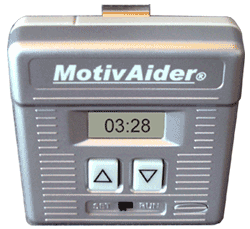 In this study, the researchers worked with a fifth grader with autism, a sixth grader with autism, and a fifth grader with cerebral palsy. They taught the boys to wear the MotivAider (calling it a pager) and note a + or a – to indicate their behavior each time the MotivAider vibrated. The behaviors they monitored were all related to being on-task: “eyes on my work,” “in my seat,” and “doing work.” Once each boy consistently rated his behavior upon feeling the vibration, the researchers implemented the intervention.
In this study, the researchers worked with a fifth grader with autism, a sixth grader with autism, and a fifth grader with cerebral palsy. They taught the boys to wear the MotivAider (calling it a pager) and note a + or a – to indicate their behavior each time the MotivAider vibrated. The behaviors they monitored were all related to being on-task: “eyes on my work,” “in my seat,” and “doing work.” Once each boy consistently rated his behavior upon feeling the vibration, the researchers implemented the intervention.
The MotivAider’s were initially set to vibrate every two minutes. Each time the MotivAider vibrated, the student would mark a + or a – for each of the behaviors on a sheet he had on his desk. Prior to the intervention, the average percentages of time each boy was on-task ranged from 26% to 77%. Upon implementation of the intervention, “all three students showed an immediate and substantial increase of on-task behavior ranging consistently from 80% to 100%.
The researchers also included a plan for fading out the use of the MotivAider‘s, changing from a fixed schedule of every two minutes, to an increasing variable schedule. The fading schedules varied for each student. For example, for one student, the fading schedule started with a variable schedule of a vibration about every four minutes, then moved to about every six minutes, then to about every eight minutes, and then to about every ten minutes. The MotivAider was then removed completely.
After the intervention was complete, researchers collected data once a week for three weeks to see if the intervention was maintained. During all three maintenance probes, “all students continued to demonstrate 80%-100% on-task behavior.”
We’ve talked about how to use MotivAider‘s in the past, but I particularly love this intervention because it is feasible for teachers to implement in the classroom, promotes independence in learners with autism, and allows teachers to focus on other issues. Take a look at the study here to get a fuller description of how to implement such an intervention with your students.
For more information about the MotivAider, click here.
WRITTEN BY SAM BLANCO, MSED, BCBA
Sam is an ABA provider for students ages 3-12 in NYC. Working in education for ten years with students with Autism Spectrum Disorders and other developmental delays, Sam has developed strategies for achieving a multitude of academic, behavior, and social goals. Sam is currently pursuing her PhD in Applied Behavior Analysis at Endicott College.
Pick of the Week: Clue Cards – 5 Fun Games to Improve Social Communication
 Clue Cards aims to help students who are struggling with interpreting social situations, reading facial expressions, noticing body language, and understanding idioms and other metaphorical forms of speech. This week, you can save 15%* on your set of Clue Cards by entering or mentioning promo code CLUE15 at check out!
Clue Cards aims to help students who are struggling with interpreting social situations, reading facial expressions, noticing body language, and understanding idioms and other metaphorical forms of speech. This week, you can save 15%* on your set of Clue Cards by entering or mentioning promo code CLUE15 at check out!Therapists, teachers and parents can uses the cards and games included in this set to help students perceive and understand the details of social presentation. Because the cards are flexible and adaptable, they can be used with both younger and older children, with mild or sever socio-emotional difficulties. There are instructions for 5 different games along with 100 reward chips, targeted for players ages 6-16.
Below are the 5 different games included in Clue Cards:
- Get a Clue: Players find “clues” in social situations and make inferences based on those clues (using the 15 Social Situation Cards).
- Faces and Feelings: Link expressions with associated emotions (using the 20 red Feeling Cards, 20 blue Faces Cards).
- Body Language: Matching photos and captions, children explore body language for clues about thoughts and feelings (using the 24 turquoise Photo Cards, 24 pink Caption Cards).
- The 5 W’s: Analyze 10 social scenes by asking “who-what-where-when-why” questions (using the 10 Social Scene Cards, 1 Spinner).
- In Other Words: Learn the idioms and proverbs that often pop up in social conversation (using the 30 green Idiom Cards, 30 light green Idiom Definition Cards, 26 purple Proverb Cards, 26 light purple Proverb Definition Cards).
Don’t forget to redeem your 15% savings* on Clue Cards this week by using promo code CLUE15 when you check out online or over the phone with us!
*Offer is valid until 11:59pm EDT on October 14th, 2014. Not compatible with any other offers. Be sure there are no spaces or dashes in your code at check out!
How to Assess and Address Pants-Wetting Behavior—A Response to a Teacher’s Question
Sometimes we get specific questions from teachers and parents about managing problem behaviors that are quite common. In these cases, we think it can be helpful to share the question and response, so that others in similar situations might benefit from the suggestions offered. Bed and pants-wetting can be an enormously challenging issue both at home and at school, so when we received the following question from a teacher in Australia about her student, we thought it was a great opportunity to offer some suggestions and strategies on how to address the behavior.
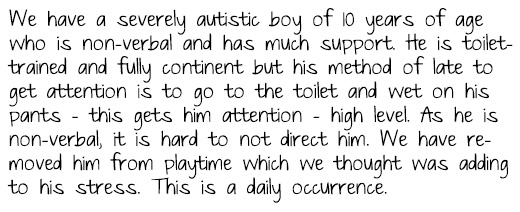
This is definitely a difficult behavior to address. It’s also challenging to provide accurate advice without directly observing the behavior, instead here are a few questions to consider and potential resources.
- First and foremost, this is a behavior in which you should consult with a Board Certified Behavior Analyst for assistance. You can find BCBAs in your area by going to this webpage: https://www.bacb.com/?page=100155. If possible, reach out to more than one to find the BCBA who is the best fit for you and your learner.
- Second, you should conduct a functional assessment to clearly determine the reason for the behavior. It may be for attention, but you may discover there is a different cause. It is best to perform a formal functional analysis, but if that is not possible, you may consider using the Functional Assessment Screening Tool (FAST). To get the best results from this, you should have more than one person fill it out, and, if possible, one person who observes the behavior but is unfamiliar with the child. Compare results to see if you are in agreement, then make a behavior intervention plan based on the function of the behavior. For more information about the FAST and its reliability compared to a formal functional assessment, you should refer to the study by Iwata, Deleon, & Roscoe (2013).
- If indeed the behavior is for attention, consider how to provide minimal attention for pants-wetting. You mention that he receives high-level attention right now. What qualifies as high-level for him? Is it eye contact? Physical touch? Proximity? There are ways to remove each of these types of attention while also making sure you address the behavior hygienically.
- While your son is continent, some of the strategies that are used in toilet training may prove helpful in intervening with this behavior. Take a look at this article by Kroeger & Sorenson-Burnworth (2009), which “reviews the current literature addressing toilet training individuals with autism and other developmental disabilities.” It may provide potential solutions that you have not attempted.
- Take a look at this Tip of the Week, How to Implement a Successful Behavioral Intervention, for additional information on implementing a successful behavior intervention.
I hope this information is helpful! And good luck as you plan and implement your intervention.
WRITTEN BY SAM BLANCO, MSED, BCBA
Sam is an ABA provider for students ages 3-12 in NYC. Working in education for ten years with students with Autism Spectrum Disorders and other developmental delays, Sam has developed strategies for achieving a multitude of academic, behavior, and social goals. Sam is currently pursuing her PhD in Applied Behavior Analysis at Endicott College.

